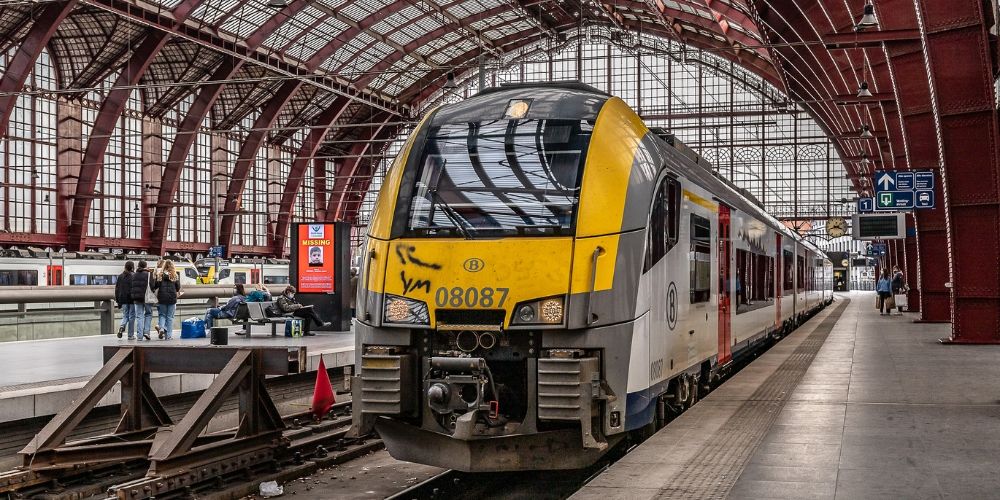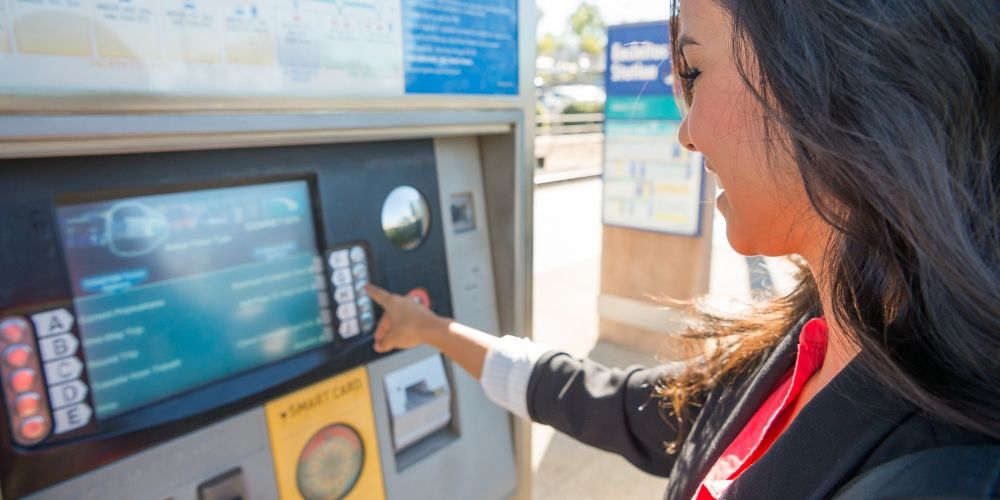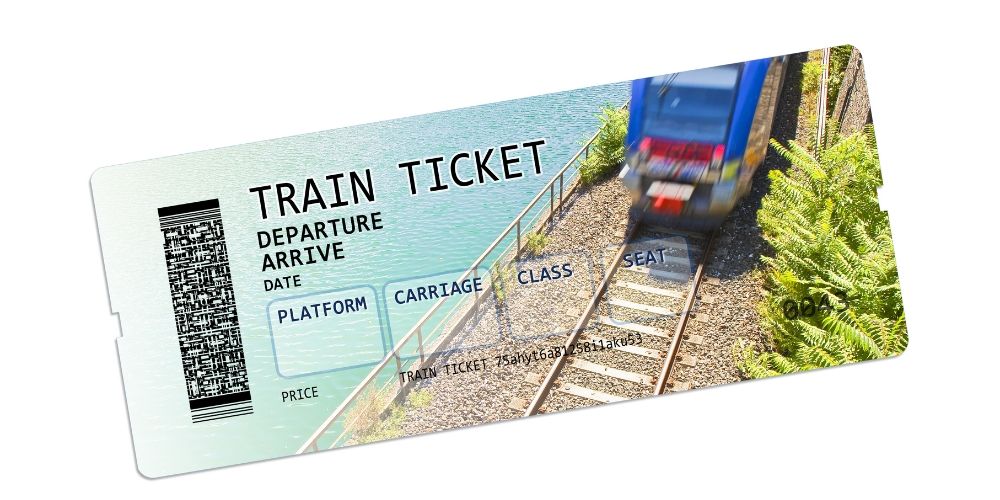Traveling by train is one of the best ways to discover Italy: comfortable, fast, and full of beautiful and diverse landscapes from north to south. From the great art cities to hidden villages, the Italian rail network connects the entire country, offering you an authentic experience. But before you book, it is useful to know some tips about types of trains and onboard services. In this guide to train travel in Italy, you will find everything you need to organize your rail jour.T

Listen to the podcast version of the article with Monna Lisa and Leonardo's voices
Italy by train: is traveling by rail better?

If you’re about to visit Italy and still deciding how to get around, let me tell you one thing: the train is your best friend. Really! It’s not just a means of transport, it’s part of the experience.
Why? Because you save time and money, and above all, you get to enjoy stunning views: think of the rolling Tuscan hills, charming hilltop villages, the indigo blue sea?
Now, if you’ve never taken a train in Italy, there are a few things to know — nothing complicated. Let’s start with the basics: there are different types of trains, each with its own purpose.
The best are the high-speed trains: Frecciarossa and Italo, which can get you from Milan to Rome in under 3 hours. Then there are Intercity trains, connecting major cities but with more stops. And finally, regional trains, perfect for short trips or reaching destinations off the main tourist routes.
To save money by booking in advance, you will find great rates, even for the most luxurious trains. And if you think you will use them a lot, there are Train Passes for Italy 2025 that will allow you unlimited travel within a certain number of days.
One last thing: trains always bring you right into the city center. Plus, they’re convenient, no check-ins, no baggage limits, you travel with whatever you carry, and you can relax watching the scenery or chatting comfortably.
If you really want to discover Italy, do it by train. It will show you the Bel Paese through the right eyes: those of someone who’s not in a rush but knows how to enjoy the journey.
Overview of the Italian Railway Network

Italy’s railway network is one of the largest and most well-organized in Europe, connecting nearly every corner of the country, from major cities to small villages. One of its biggest strengths is the high-speed service, which allows for fast, comfortable travel with modern onboard amenities. At the same time, the extensive regional network makes it easy to reach lesser-known destinations.
Traveling by train in Italy, after all, is a practical, flexible, and often affordable way to explore the country. That said, the system does have its downsides. Regional trains, for example, are often less punctual and can get crowded, especially during rush hours or on weekends. Service quality can vary significantly from region to region, and some trains can feel outdated or less comfortable or not very clean . Strikes also happen from time to time, which can disrupt travel plans and cause inconvenience.
Still, despite these issues, Italy’s rail network remains a convenient and reliable way to get around, especially if you plan ahead and book in advance.
High-speed trains versus regional trains

High-speed trains like Frecciarossa, Frecciargento, Frecciabianca, and Italo are the pride of Italy’s railway network. They’re designed to connect the country’s major cities quickly and efficiently, while offering a high level of comfort, modern carriages, air conditioning, free Wi-Fi, power outlets, and onboard services like a café car. They’re ideal for travelers short on time who still want to move around in style and without stress.
Regional trains, on the other hand, cover short to medium routes, linking smaller towns, villages, and areas not served by high-speed lines.They are essential for exploring less touristy Italy, but they have simpler standards: less comfort, no seat reservations, potential delays and overcrowding, especially during peak hours.
So how do high-speed trains in Italy compare with regional trains? In short, high-speed trains are perfect for those seeking speed and convenience, while regional trains are the best choice for getting around smaller towns on a budget. Using both is often the smartest way to discover Italy from every angle.
Ticket booking: online option and at the station

How can I book a train ticket in Italy? The answer is simple, and the system offers several options depending on your preferences.The most convenient and recommended method is definitely online booking, through the official websites of Italy’s two main train operators: Trenitalia and Italo. Both sites are available in English and allow you to check schedules, compare prices, choose your seat, and pay securely by credit card or PayPal. Additionally, their mobile apps let you keep your ticket handy in digital format, no need to print it.
If you prefer to buy tickets in person, you can do so at the station, either at self-service machines, which are available in multiple languages and easy to use,or at ticket counters with staff assistance. This option is especially useful for regional trains or last-minute travel, though keep in mind that during peak seasons or at major stations, there might be lines.
One important detail: for high-speed trains, reservations are mandatory, even just a few minutes before departure. For regional trains, tickets are not tied to a specific seat or time, but must be validated before boarding using the green or yellow machines in the station, depending on the company. Otherwise, even with a valid ticket, you could be fined.
In short, booking online is faster and often cheaper, but buying at the station is still a good alternative for flexible travelers or those who prefer to speak with someone in person.
Rail passes: when and how to use them

Is it worth buying a rail pass to travel in Italy?Let's say that the train passes, such as the Eurail Italy Pass (for non-Europeans) and the Interrail Italy Pass (for EU citizens), are excellent solutions if you plan to travel several times by train within a few days. They offer unlimited travel for a certain number of days on almost the entire Trenitalia network, including high-speed trains, with mandatory reservation and a small surcharge. They are ideal for those who want to visit multiple cities, such as Rome, Florence, Venice, Milan, without worrying about individual tickets.
On regional trains, you can board freely without additional costs, but it is always necessary to validate or register the trip. In general, the pass is worthwhile if you expect at least 3-4 main routes, or if you want to remain flexible until the last moment. If, however, you have only a couple of trips, single tickets, booked in advance, might be more economical.
The best scenic train routes

Some train routes offer postcard views of landscapes rolling by outside the window, enriching the journey with incredible emotional experiences. But what are the best scenic train routes in Italy? One of the most famous is the Naples–Sorrento line with the Circumvesuviana, a local train that crosses volcanic landscapes and overlooks the Gulf. The Florence–Rome,high-speed route, on the other hand, offers spectacular glimpses of the Tuscan and Umbrian countryside. The Milan–Tirano route leads towards the Swiss border among mountains, lakes, and lush green valleys, and is the starting point of the famous Bernina Express. Also, the Palermo–Cefalù–Messina route in Sicily provides breathtaking views of the sea and the hills of the hinterland. Finally, for those who love alpine atmospheres, the Bolzano–Brenner route crosses spectacular mountain landscapes all year round.
If you love to travel slowly and enjoy the road, these best train routes in Italy, will make you discover a different and enchanting Country, everything from the window.
Discover Bernina Express Panoramic TrainTips for train travelers on their first experiences in Italy

If it's your first time taking a train in Italy, there are some tips that will help you get started on the right foot.
What advice do you have for traveling by train in Italy?
First of all: buy tickets in advance for high-speed trains, saving money and choosing your seat. For regional trains, you can also purchase tickets on the same day, but don't forget to validate your ticket before getting on, using the machines at the station, yellow or green; it's a simple but essential step to avoid fines.
Arrive at the station at least half an hour early: many are large, a bit chaotic, and the departure platform for your train might change at the last minute.
Always check the boards or the app to see the departure time of your train, any delays it might have, and the platform number. Keep your ticket in digital or paper format with you: conductors often ask for it.
Finally, travel light if you can and keep an eye on your luggage and wallet, especially in the busiest stations. The train is a beautiful way to discover Italy, but like any journey in the world, a bit of preparation and caution make a difference.
Have a good trip!

In the end, choosing the train to explore Italy means experiencing the journey at a different, more relaxed pace, not engaged in driving, for example. It’s a practical way to move around, but also an opportunity to look around, enjoy the life flowing by the window, get excited about discovering hidden corners, talk to a local sitting next to you, and feel part of the country you are crossing.
The train thus takes you everywhere calmly, practically, and charmingly. With a little organization, every trip becomes an experience to live, not just a means to an end.
So enjoy your vacation with our tips on the Italy by train: everything you need to know before booking!
About the author
Written on 09/06/2025




Giacinta Navarra
Traveling by train in Italy is comfortable and scenic. Here’s everything you need to know before booking your next rail journey.